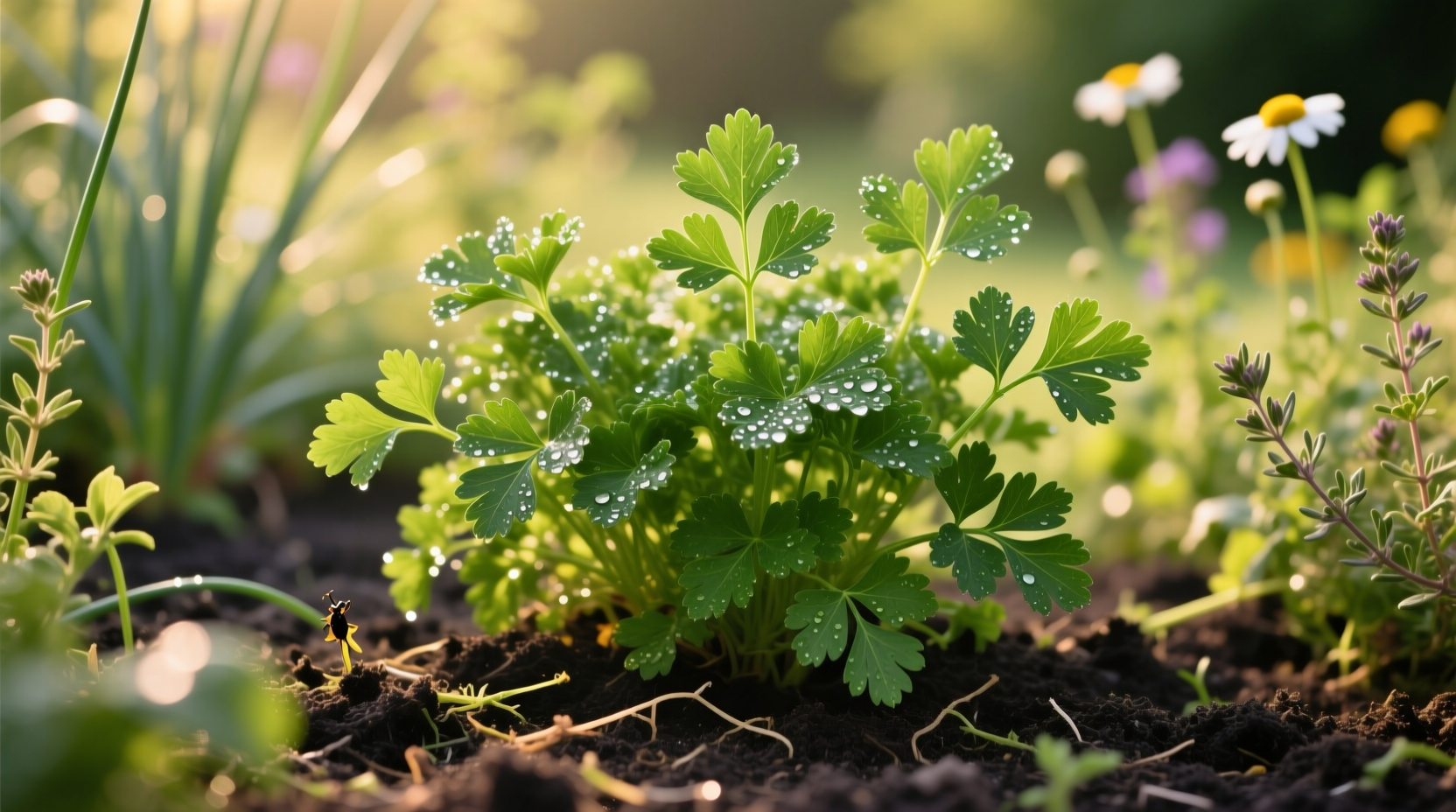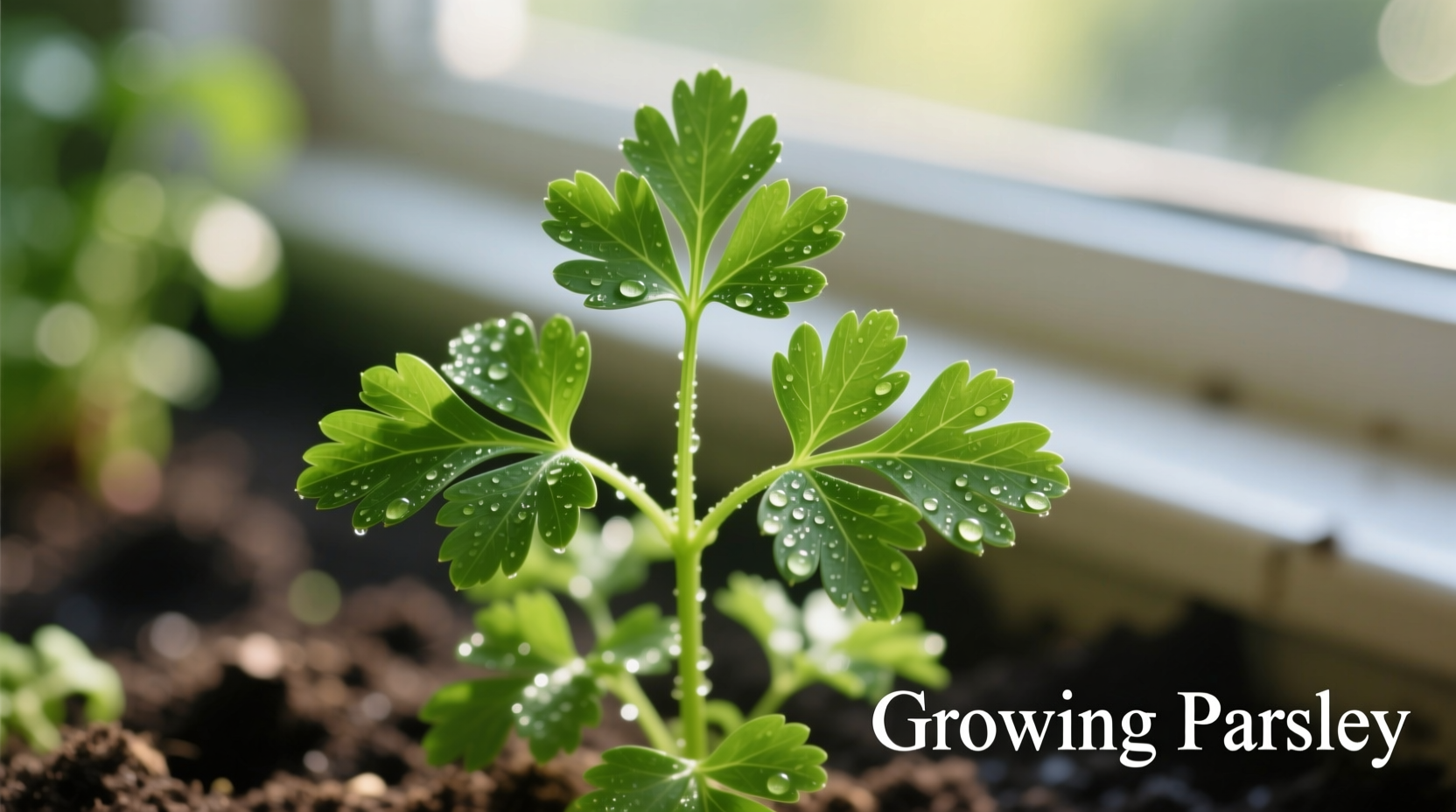Parsley thrives in well-draining soil with pH 6.0-7.0, requiring 6-8 hours of sunlight daily. Plant seeds 1/4 inch deep after last frost, keep soil consistently moist, and harvest outer leaves when plants reach 6 inches tall for continuous growth. Most varieties mature in 70-90 days with proper care.
Nothing beats the vibrant flavor of freshly harvested parsley in your dishes. Whether you're a beginner gardener or expanding your herb collection, growing parsley successfully is simpler than you might think. This comprehensive guide delivers exactly what you need to know to cultivate healthy, productive parsley plants that will enhance your cooking all season long.
Why Homegrown Parsley Outperforms Store-Bought
Commercially grown parsley often loses flavor during transportation and storage. Homegrown parsley harvested at peak freshness contains up to 30% more essential oils, delivering superior flavor and nutritional value according to research from the University of California Cooperative Extension. Plus, you'll save money while reducing plastic waste from store-bought herb containers.
Getting Started: Your Parsley Growing Checklist
Before planting, gather these essentials for success:
- High-quality parsley seeds or starter plants
- Well-draining potting mix or garden soil
- Garden trowel and watering can with fine spray
- Organic fertilizer (compost or fish emulsion)
- Containers if growing indoors (minimum 6-8 inches deep)
Choosing the Right Parsley Variety for Your Space
Understanding the differences between parsley types helps you select the best variety for your gardening goals. This comparison table from the USDA Agricultural Research Service shows key characteristics:
| Variety | Growth Habit | Flavor Profile | Best For |
|---|---|---|---|
| Flat-Leaf (Italian) | Upright, 12-18 inches | Bold, robust, slightly peppery | Cooking, sauces, pesto |
| Curly Parsley | Bushy, 8-12 inches | Milder, fresh, grassy | Garnishes, salads, visual appeal |
| Japanese Parsley | Compact, 6-10 inches | Strong, distinctive | Small spaces, containers |
Step-by-Step Planting Guide: From Seed to Harvest
Follow this proven sequence for optimal results:
Timing Your Planting Perfectly
Plant parsley seeds 4-6 weeks before your last expected frost date. The University of Minnesota Extension recommends soaking seeds for 24 hours before planting to improve germination rates, which naturally average only 30-40% due to essential oils in the seed coat. For continuous harvest, plant new seeds every 3-4 weeks through early summer.
Preparing Your Growing Space
Parsley needs well-draining soil rich in organic matter. Amend garden beds with 2-3 inches of compost worked into the top 6-8 inches of soil. For container growing, use a high-quality potting mix with perlite for drainage. The ideal soil pH ranges from 6.0 to 7.0 - test your soil with an inexpensive kit from your local garden center.
Sowing Seeds or Transplanting Seedlings
Plant seeds 1/4 inch deep, spacing them 6 inches apart in rows 12 inches apart. Keep soil consistently moist but not waterlogged during germination, which typically takes 2-4 weeks. When seedlings reach 2 inches tall, thin to 6-8 inches between plants. For transplants, dig holes slightly larger than the root ball and plant at the same soil level as in their containers.

Avoiding Common Growing Mistakes
Even experienced gardeners encounter these parsley pitfalls. Here's how to prevent them:
Watering Wisdom
Parsley needs consistent moisture but hates soggy roots. Water deeply when the top inch of soil feels dry, aiming for 1-1.5 inches of water per week. During hot weather, you may need to water daily. Container plants typically require more frequent watering than garden beds.
Sunlight Requirements
While parsley prefers full sun (6-8 hours daily), it tolerates partial shade better than many herbs. In hot climates (USDA zones 8+), provide afternoon shade to prevent bolting. The Cornell University Gardeners' Resource notes that insufficient light causes leggy growth and reduced flavor intensity.
Pest Prevention Strategies
Aphids and leaf miners are common parsley pests. Prevent infestations by:
- Planting alongside companion plants like tomatoes, asparagus, or chives
- Spraying plants with a strong stream of water to dislodge aphids
- Using floating row covers for young plants
- Removing affected leaves promptly
Harvesting for Maximum Flavor and Plant Longevity
Timing your harvest correctly ensures the best flavor and encourages continued production:
When to Harvest
Begin harvesting when plants reach 6 inches tall, typically 70-90 days after planting. The optimal time is early morning when essential oils are most concentrated. Harvest outer stems first, cutting them at the base with clean scissors. Never remove more than one-third of the plant at once to avoid stressing it.
Storage Techniques That Preserve Freshness
Extend your harvest with these professional methods:
- Refrigerator: Place stems in a glass with 1 inch of water, cover loosely with a plastic bag
- Freezing: Chop leaves and freeze in ice cube trays with water or olive oil
- Drying: Hang small bunches upside down in a dark, well-ventilated space
Season Extension and Overwintering Tips
Parsley is a biennial plant that often survives mild winters. In USDA zones 6 and warmer, mulch plants with 2-3 inches of straw when temperatures drop below 40°F. In colder zones, transplant container-grown parsley indoors before first frost, placing it in a south-facing window with supplemental grow lights if needed.
Troubleshooting Guide: Solving Common Parsley Problems
Identify and fix these frequent issues:
| Symptom | Most Likely Cause | Solution |
|---|---|---|
| Yellowing leaves | Overwatering or nitrogen deficiency | Reduce watering frequency; apply balanced organic fertilizer |
| Leggy, sparse growth | Insufficient light | Move to sunnier location; prune to encourage bushiness |
| Bolting (flowering) | Heat stress or day length changes | Harvest more frequently; provide afternoon shade in hot weather |
| Brown leaf spots | Fungal disease from wet foliage | Water at soil level; improve air circulation; remove affected leaves |
Advanced Growing Techniques for Abundant Harvests
Once you've mastered the basics, try these professional methods:
Succession Planting Schedule
For continuous harvest throughout the growing season, follow this planting timeline:
- Early spring: First planting (as soon as soil can be worked)
- Late spring: Second planting (4-6 weeks after first)
- Mid-summer: Third planting (provides fall harvest)
- Late summer: Fourth planting (for overwintering in mild climates)
Nutrient Management
Parsley benefits from regular feeding. Apply a balanced organic fertilizer every 4-6 weeks, or use compost tea every 2-3 weeks. The Rodale Institute's research shows that parsley responds particularly well to nitrogen-rich amendments like fish emulsion during active growth periods.











 浙公网安备
33010002000092号
浙公网安备
33010002000092号 浙B2-20120091-4
浙B2-20120091-4